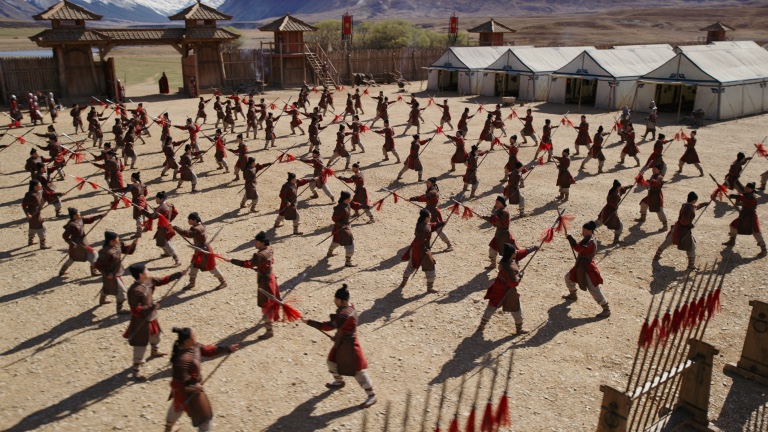
“I wanted a different way of looking at the monarchy,” says director Tom Hooper, about The King’s Speech – the acclaimed tale of King George VI’s visit to unorthodox speech therapist Lionel Logue (essayed, in equally lauded fashion, by Colin Firth and Geoffrey Rush, respectively), who helped him overcome a crippling stutter. This, of course, proved indispensable to Britain as a whole, given George’s surprise ascension to the throne in the wake of his brother’s abdication. Speech-making became critical not only during the Depression, but even more so during the War.
To chart this particular story of this particular reign, Hooper – who spoke to us on the day he’d been announced as one of the DGA nominees – said he wanted to “subvert” the usual notions of pomp surrounding the circumstances of kings. The times were “much more austere,” Hooper says of London in the ’30s, and Royals “didn’t live in castle(s).” In part, because they knew that being too ostentatious in such times could be politically – and perhaps literally – dangerous.
Yet in David Seidler’s script, the opening – where the then-Duke of York gives an ill-fated, stutter-wracked speech at Wembley Stadium in the ’20s – originally called for Royal bedecking in plumage, medals, etc. Then Hooper came across archival footage of the original speech and saw the Duke was wearing a “dark, grey suit and a top hat. I never would have expected it. Out of that, grew the image of a man dressed in black.”
So George’s bleakness fit the bleakness of the times, and from that grew Hooper’s visual sense of the film, which he imparted to his collaborators and crew heads. The sense of pervasive smog from the coal-burning “became a lighting design,” when he talked to cinematographer Danny Cohen – emphasizing “sunlight through smog,” and basements “in top light,” casting long shadows over the people in them. “We don’t have that ‘high tea’ look,” he adds.
And sometimes, his collaborators imparted that sense back to Hooper. When they were scouting locations in London – and Hooper, who lives there, and has filmed there, is pretty familiar with the city – his production designer (on several earlier projects, as well), Eve Stewart told him there was this “extraordinary space” he had to see.
That space was the bare walk-up that served as Logue’s clinic/headquarters, and was found a mere block or so away from where his real offices had been located. The room that was used was anchored by a massive “devastated” back wall, which Hooper describes as “looking like a Klimt,” owing to a couple centuries’ worth of peeled paint layers, fading snatches of wallpaper, et al.

Having found it, there was no thought to “cover up that ghastly wall.” Indeed, the wall helped him “get away from period cliches,” and allowed him to continue “thinking in visual terms – what is the visual analog to stammering?”
The solution became to find visual “silences,” and thus Firth’s face is often “framed with empty space,” while Rush, as the man who brings him out of isolation, is “framed with busy-ness.”
“Location hunting,” he says, elaborating on his searches with Stewart (though it should be noted the Klimt-like wall was found on the first day) “is really important. Finding places that become characters in the film.”
And all those places were captured on 35mm. “I’m a bit of a die-hard,” Hooper says, about shooting on actual film, instead of digits. In part, he says that he knows once he makes the change, he’ll never get to shoot on film again. Additionally, he knew for this project he’d be cutting to archival film.
The person charged with cutting that archival film – and the newly shot stuff – was editor Tariq Anwar. “He cut as we went along,” Hooper recounts, assembling scenes a couple days behind the shooting.
A few short days after wrap, a workprint was done. “Tariq was brilliant in this,” noting there was an “everything” cut that ran about four hours, and a more manageable one closer to the eventual released version. Anwar’s “judgments and rhythms” helped the director get a sense of the finished film, finalizing rhythms that began with rehearsals in those found spaces, where Hooper likes to “operate a lot on the A camera,” a process in which he’s “completely free,” to discover movement and blocking in collaboration with the actors.
It’s a hands-on approach also used by costume designer Jenny Beavan, who “wanted to build key costumes herself” – especially Firth’s. It was all part of striving for “a complete recreation of real characters.”
All the way down to the King’s speech.
——
Below, The King’s Speech director Tom Hooper discusses how the cast and crew of the film pulled out all the stops to craft this critically-acclaimed tale.





